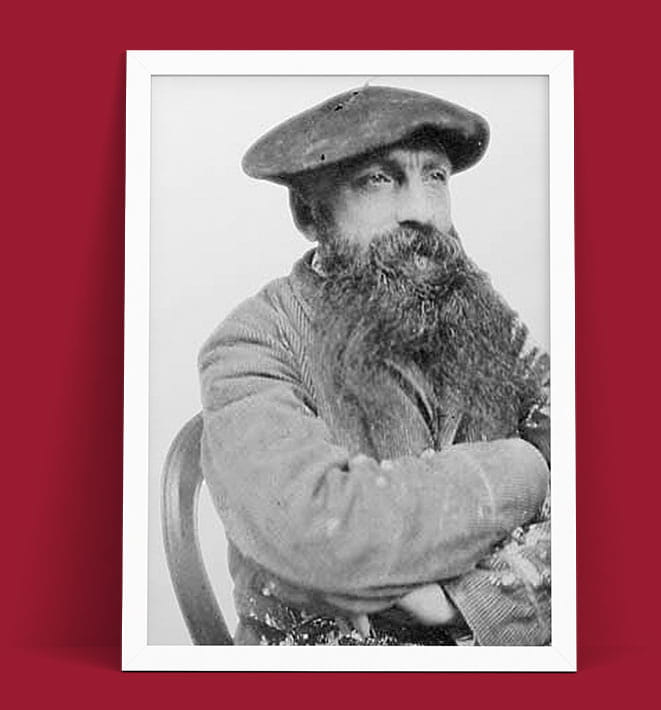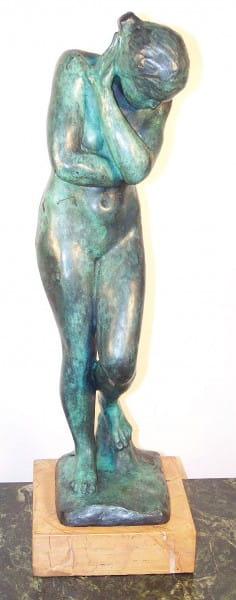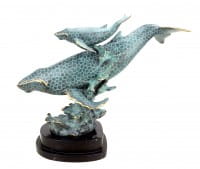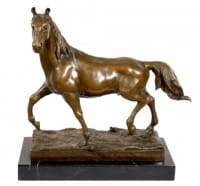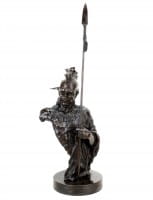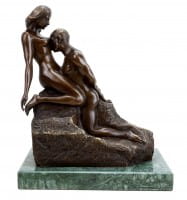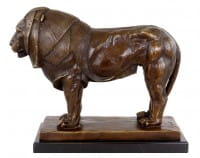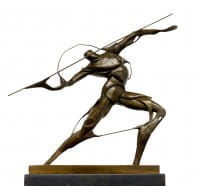Prices incl. VAT, free shipping worldwide
Ready to ship today,
Delivery time appr. 3-6 workdays










Product description
"Rodin Eve - Shades of Eve - Auguste Rodin"
| Height | 48 cm |
| Width | 14 cm |
| Length | 14 cm |
| Weight | 5,8 kg |
Eternal Shame and Human Truth – Auguste Rodin’s “Eve” in Bronze - Signed
The powerful Rodin Statue known simply as Eve embodies the very moment of self-awareness and exile described in the Book of Genesis. This masterful Rodin Sculpture shows the first woman curling inward, arms crossed tightly over her chest while her head bows in sorrow. The tactile bronze surface captures both tension and vulnerability, transforming biblical narrative into timeless human drama. As an independent work within the vast project of the Gates of Hell, the Rodin Eve arrests the viewer with its raw honesty and graceful restraint.
Origins within the Gates of Hell
The Auguste Rodin Eve was first conceived in 1881 for the monumental Porte de l’Enfer commissioned as the entrance to a planned Decorative Arts Museum in Paris. Rodin sought to populate this enormous portal with figures from Dante’s Divine Comedy, and Eve was intended as a central presence. Work began in Paris around 1881–1882, but the model’s unexpected pregnancy forced Rodin to abandon the full figure before completion. Rather than a loss, this interruption heightened the expressive tension, and the unfinished quality became a defining element of this Auguste Rodin Artwork.
Rodin’s Artistic Language
In the Rodin Sculpture of Eve, every contour speaks of psychological depth. The surface modeling—Rodin’s celebrated modelé—creates shadows that vibrate across the figure’s back and shoulders. Instead of a passive classical nude, this Rodin Statue embodies inner turmoil. The bowed head and tightened limbs suggest shame and the dawning knowledge of mortality. Through this Auguste Rodin Artwork, the artist achieved a revolutionary synthesis of naturalistic detail and spiritual expression that influenced generations of modern sculptors.
Life of the Master Sculptor
Born on 12 November 1840 in Paris to a working-class family, Auguste Rodin showed early talent but struggled for recognition. His father was a police clerk and his mother a seamstress, both supportive of his artistic ambitions. After repeated rejections by the École des Beaux-Arts, Rodin trained at the Petite École and worked as a craftsman before developing the style that would define modern sculpture. Travels to Italy introduced him to Michelangelo’s power, while his years in Brussels honed his technique. By the time he created the Rodin Eve, he was emerging as the leading sculptor of his generation. Rodin died in Meudon on 17 November 1917, leaving a legacy of daring realism and emotional truth.
Symbolism of the Rodin Eve
The Auguste Rodin Eve represents more than the biblical figure; it captures the universal moment of confronting one’s own humanity. Rodin himself said that the pose of the model, shy and self-embracing, revealed the psychological essence he sought. The figure’s twisting torso and downward gaze evoke guilt and isolation, yet the supple bronze exudes strength and resilience. This duality is the hallmark of an Auguste Rodin Artwork, inviting viewers to witness both the fall and the enduring dignity of the human spirit.
Technique and Material Presence
Cast from rich, dark bronze, the Rodin sculpture has a green patina and allows the light to dance across its surface, highlighting both muscles and soft flesh. The figure’s slight contrapposto and the rough base create a dialogue between nature and art. This Rodin Statue demonstrates Rodin’s gift for making metal appear alive, an ability that placed him at the forefront of modern art and defined the essence of an Auguste Rodin Artwork.
Where to Experience the Masterpiece Today
Authentic casts of the Rodin Eve can be admired at the Musée Rodin in Paris and Meudon, at the Metropolitan Museum of Art in New York, the National Gallery of Art in Washington, and the Victoria and Albert Museum in London. Each museum highlights this Rodin Sculpture as a pivotal work from the Gates of Hell cycle and a cornerstone of modern European sculpture.
An Enduring Vision
Through Eve, Auguste Rodin redefined the portrayal of the female nude, replacing idealized beauty with psychological realism. This Rodin Statue continues to resonate as a meditation on shame, self-knowledge, and resilience. More than a biblical illustration, the Auguste Rodin Eve remains a universal symbol of the human condition, a testament to Rodin’s genius and to the enduring power of sculpture to reveal the deepest truths of the soul.
Our advantages
free shipping
Worldwide free shipping
14 days money back
You can cancel your order
within 14 days
secure payment services
Paypal, Master Card, Visa, American Express and more

